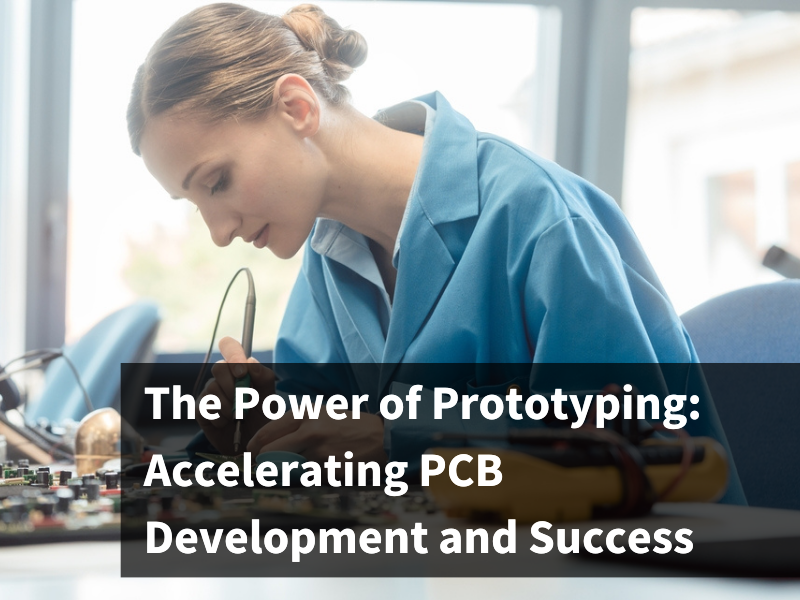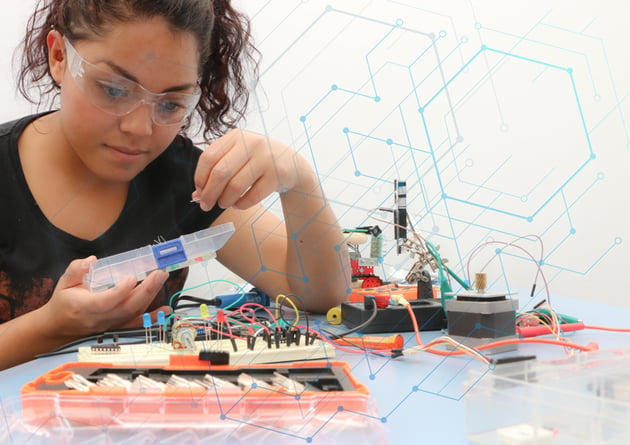The Power of Prototyping: Accelerating PCB Development and Success
Discover how prototyping transforms product development. Prototyping, a crucial step before full-scale production, enhances design, functionality, and user experience. It's a proven method to identify flaws, optimize costs, and accelerate time-to-market.
Learn why gaining valuable user feedback during prototyping ensures a competitive edge. Dive into the iterative process that maximizes efforts, reduces costs, and ensures the success of new products. Embrace the potential of prototyping for a streamlined, user-centric, and successful product development journey.

Prototyping, a fundamental process involving the creation of preliminary models before full-scale production, serves as a crucial tool in refining designs, managing costs, and expediting the time-to-market for new products. Join us in delving into the practical applications and transformative impact of prototyping, particularly in user experience enhancement and flaw identification.
Table of Contents
- The Definition and Purpose of Prototyping
- Benefits of Prototyping in New Product Development
- Enhancing Design and Functionality
- Reducing Costs and Time-to-Market
The Definition and Purpose of Prototyping
Prototyping is the process of creating a working model or sample of a product before it goes into full-scale production. Its purpose is to test and evaluate the design, functionality, and performance of the product in a real-world scenario. By creating a prototype, PCB designers and design companies can identify and address any potential issues or improvements before moving forward with the final production.
Prototyping serves as a proof-of-concept for the product, allowing designers to visualize and validate their ideas. It helps in refining the design, making necessary adjustments, and ensuring that the final product meets the desired requirements and specifications.

Furthermore, prototyping also enables designers to communicate their ideas effectively with stakeholders, investors, and potential customers. It provides a tangible representation of the product, making it easier for others to understand and provide feedback.
Overall, the purpose of prototyping is to minimize risks, optimize design, and ensure the successful development of new products.
Benefits of Prototyping in New Product Development
Prototyping offers numerous benefits in the process of developing new products.

1. Identify Flaws and Issues
Firstly, it allows designers to identify and rectify any design flaws or issues early on, saving both time and money. By testing the prototype, designers can identify potential improvements and make necessary adjustments before investing in mass production.
2. Enhance Functionality
Secondly, prototyping helps in enhancing the design and functionality of the product. It provides an opportunity to evaluate the user experience, ergonomics, and overall aesthetics of the product. By gathering feedback from users and stakeholders, designers can refine the design and ensure that it meets the market demands and customer expectations.
3. Optimize Cost and Time
Thirdly, prototyping enables designers to reduce costs and time-to-market. By catching design flaws early on, designers can avoid costly redesigns and rework later in the production process. It also allows for faster iterations and modifications, ultimately speeding up the time-to-market for the final product.
4. Gain User Feedback
Lastly, prototyping provides an invaluable opportunity to gain user feedback. By testing the prototype with potential users, designers can gather insights and understand user preferences, pain points, and needs. This feedback can be used to make informed decisions and improvements in the final product, increasing its chances of success in the market.
In conclusion, the benefits of prototyping in new product development are numerous and significant. It enables designers to mitigate risks, optimize design, reduce costs, enhance functionality, and gain valuable user feedback, ultimately leading to successful outcomes.
Enhancing Design and Functionality
Prototyping plays a crucial role in enhancing the design and functionality of new products.
For most hardware or IoT products, creating a physical prototype allows designers to evaluate the product's aesthetics, ergonomics, and user experience. They can assess how the product looks, feels (looks-like prototype), and functions (work-like prototype) in a real-world environment, making necessary adjustments to ensure optimal design and functionality.
Similarly, for PCB designers, prototyping allows them to experiment with different PCB materials, components, configurations, and processes to find the most suitable and efficient solution for its function. Testing it's firmware implementation and functions are also extremely important. Designers can test the product's durability, performance, and compatibility with other systems or devices.
Prototyping is always an iterative process.
This iterative process helps in maximizing your efforts in refining the design and achieving the desired functionality of your product.
Other than that, prototyping also allows designers to assess the feasibility of manufacturing and assembly processes. It helps in identifying any challenges or limitations in producing the product at scale. By considering manufacturing constraints during the prototyping stage, designers can avoid costly issues and delays during mass production.
Overall, the ability to enhance design and functionality through prototyping is crucial to ensuring the success and competitiveness of new products on the market.
Reducing Costs and Time-to-Market
One of the significant advantages of prototyping in new product development is its ability to reduce costs and time-to-market. By identifying design flaws and potential improvements early on, designers can avoid expensive rework and redesigns during the later stages of production.
.jpg?width=1193&height=797&name=Time%20to%20market%20(2).jpg)
- Minimizing Design Flaws
Prototyping allows for faster iterations and modifications, enabling designers to refine the design and address any issues promptly. This iterative process helps minimize production delays and accelerates the time-to-market for the final product.
- Optimizing Resources
Furthermore, prototyping helps in optimizing the use of materials and resources. By testing different materials and configurations, designers can identify cost-effective solutions without compromising the quality and performance of the product. This cost optimization during the prototyping stage leads to significant savings in the overall production process.
- Streamline Manufacturing Process
Additionally, prototyping enables designers to evaluate the manufacturing and assembly processes. It helps in identifying any bottlenecks, complexities, or inefficiencies that may arise during mass production. By addressing these issues early on, designers can streamline the production process, reduce manufacturing costs, and avoid delays in product delivery.
Gaining Valuable User Feedback
Another crucial advantage of prototyping in new product development is the opportunity to gain valuable user feedback. By testing the prototype with potential users, designers can gather insights, preferences, and opinions about the product.
User feedback is important in various ways, including:
- Helps in understanding users' perspectives, needs, and expectations.
User feedback provides valuable insights into the usability, functionality, and overall experience of the product. Designers can identify any pain points, usability issues, or areas for improvement based on user feedback. - Increase product competitiveness.
By incorporating user feedback into the final product, designers can increase its relevance, desirability, and competitiveness in the market. - Build customer relationship
Moreover, gathering user feedback during the prototyping stage helps in building customer trust and loyalty. It demonstrates that the designers value the user's opinion and are committed to delivering a product that meets their needs. This user-centric approach can lead to a higher adoption rate, customer satisfaction, and long-term success in the market.
In the dynamic landscape of product development, the significance of prototyping shines bright. As we conclude this exploration, it's evident that prototyping is not merely a step but a catalyst for success. From reducing costs and refining designs to gaining invaluable user feedback, it paves the way for streamlined processes and user-centric innovations. Embrace the power of prototyping—a journey marked by iterative excellence, cost-efficiency, and the assurance of delivering products that stand out in the competitive market.
Posted by Nadya Lukman

Nadya is a Mechatronics Engineer who had worked on several different projects including PCU design, engine design, and AI image processing systems. Besides having a little bit of caffeine addiction, she enjoys reading and traveling to new places.

